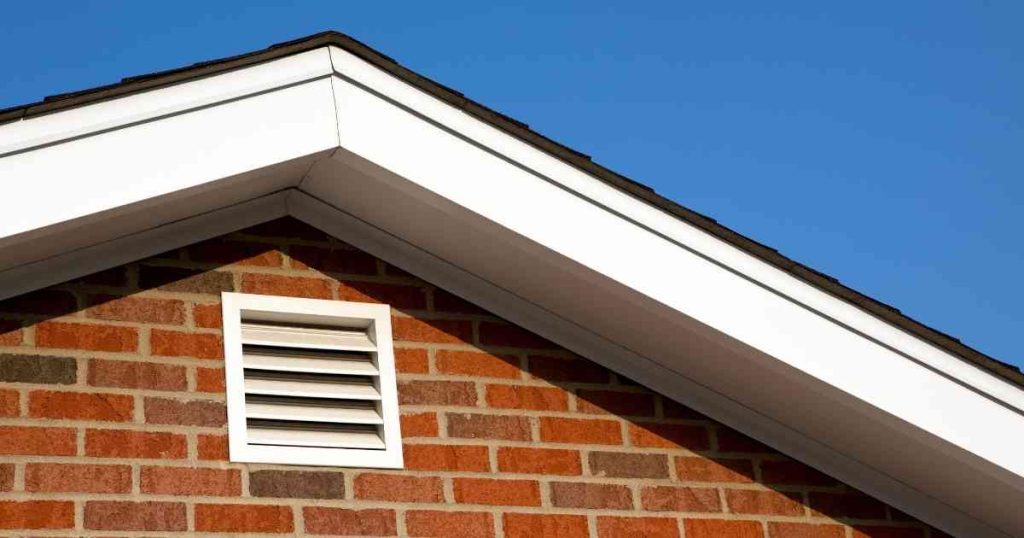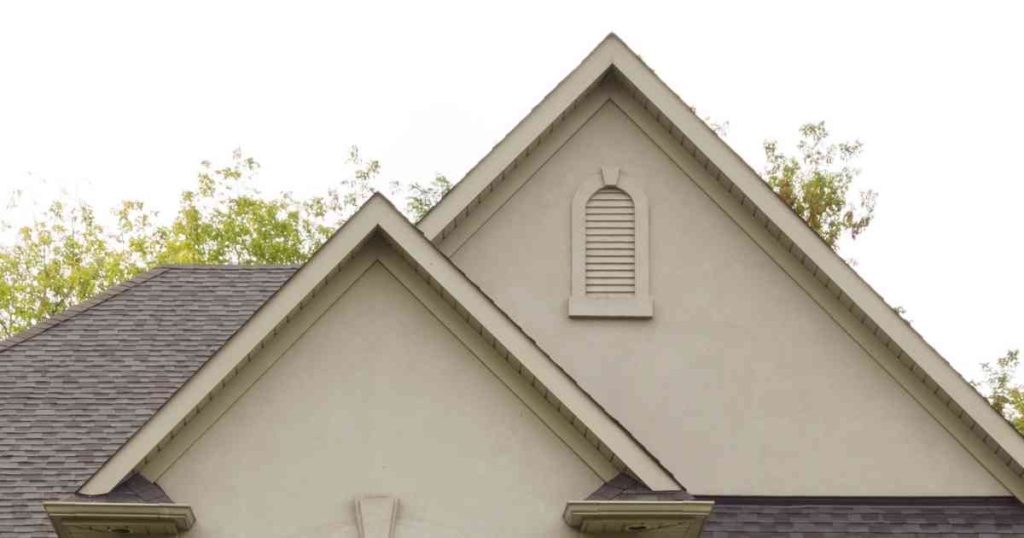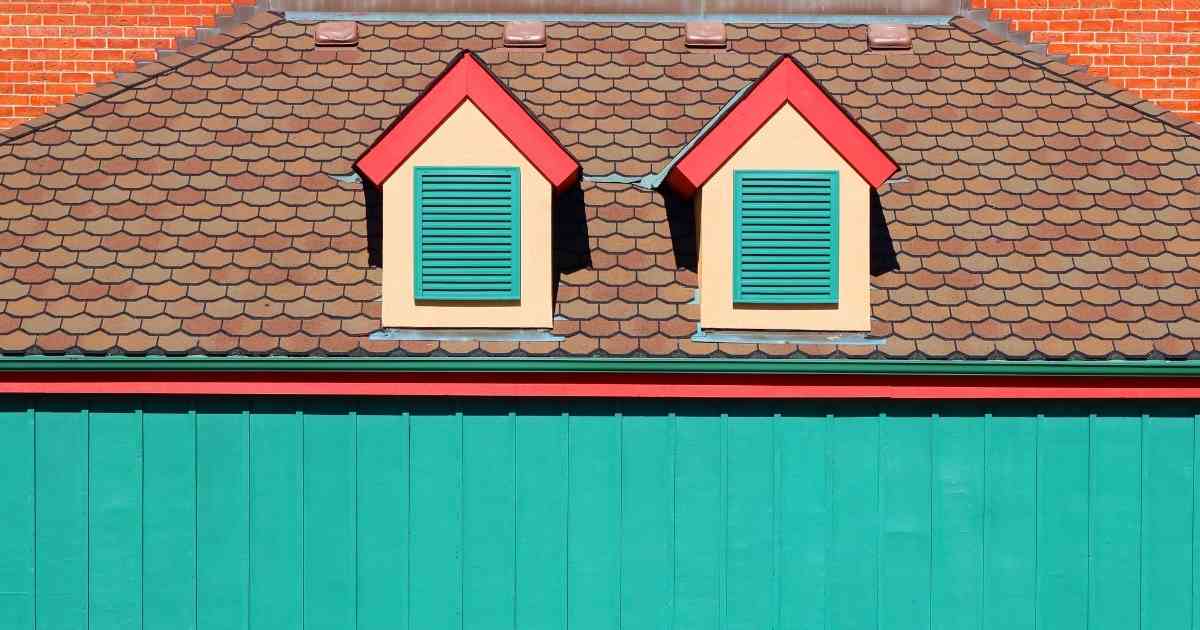Proper ventilation and airflow in the roof cavity are very important for keeping your roof materials in good condition and for regulating the temperature inside your home. There are many different types of roofing vents available on the market these days. Many of these vent types are not just helpful for managing humidity levels and temperatures, they can also add lots of aesthetic charm to your home.
Gable vents are one of these roofing or attic ventilation systems that can make your roof or home look a lot more interesting.
In this guide, we are going to take a closer look at what a gable vent is and the different types of gable vents. We’ll also discuss all the benefits of choosing a copper gable vent.
What Is a Gable Vent?

A gable vent is a type of intake vent that is used for gable-roofed homes and buildings.
The gable roof design or pitched roof design refers to a type of building that features two sections that slope down from the center of the roof (the ridge) to form a triangle (the gable) at the front or back section of the building.
Gable vents are usually installed in this triangular section of the wall (the gable) and allow air to enter or exit the roof cavity or attic. Gable vents can act as an air intake or air exhaust depending on the direction of airflow.
In passive roof ventilation systems (a system that leverages natural elements), air enters the roof cavity on one side of the building and exits on the opposite side.
In an active roof ventilation system (a system that leverages additional devices to create suction or airflow), the gable vents can be used to draw in fresh air or expel humid air and high temperatures depending on the type of active vent system you have (solar vent or whirly birds are often used).
All copper gable vent types can be helpful for cooling off your attic space, reducing your overall energy costs, reducing humidity levels inside rooftops so mold cannot develop, and enhancing the overall look or style of your home.
Different Types of Copper Gable Vents
Copper gable vents can vary a lot in terms of shape, size, and design in order to accommodate buildings of different sizes and designs. Here is a quick look at the main types of copper gable vents you can consider for your home.
Copper Gable Vent Shape
Vents are made in a huge variety of shapes and can even be custom-made according to your personal preference. Most of these systems do, however, feature the following shapes:
- Round shape
- Half Circle shape
- Octagon shape
- Rectangular with round top
- Enlonged octagon shape
- Elliptical top shape
- Pentagon shape
- Diamond shape
- Horizontal oval shape
- Star shape
- Triangle Shape
Copper Gable Vent Size
Copper vents can vary in size to accommodate bigger or smaller buildings. The larger the building is, the bigger the ventilation system it will require or the more air vents it will need. Typically, you need a single vent for every 300 square feet of attic area. An easy way to calculate the gable vent size you need is by dividing your roof cavity or attic size by 300.
But it is not just building size that determines the size of the gable vent you need. The following factors can also affect the efficiency of your copper roof products.
Location
A larger gable vent is usually required for areas with higher humidity levels or for warmer climates. In coastal buildings, there is an increased risk of mold and mildew growth, which means more ventilation is required. In warm regions, larger gable vents can also be helpful for regulating or cooling down the interior of the building.
Gable Pitch
The pitch of your rooftop may also impact the gable vent size. For a building with a higher pitch, a bigger gable vent is needed, while the same vent might not fit on a building with a lower-pitched roof. If you install a gable vent that is too small, the lower space of the attic or roof cavity can become stuffy.
Ventilation System Type
Smaller gable vents can be used when you have an active roof ventilation system because additional copper roof products like a turbine vent or power vent can increase airflow in the attic. Larger gable vents are needed when your home has a passive roof ventilation system because these systems don’t have additional products or fixtures to create artificial airflow inside the roof.
Smaller gable vents are also often combined with other vent types like ridge vents for increased efficiency.
Copper Gable Vent Design
The overall design of the copper roof vent can also vary in many ways. The louvers, for example, can vary in slat thickness, shape, and density. The vent can also be covered with a copper screen or copper mesh instead of a louver. Many people do, however, prefer gable vents with a louvered design because this gives homeowners the option to adjust the louvers in different seasons or to shut them completely during heavy rains.
Benefits of Choosing a Copper Gable Vent
Gable vents can be made from a wide range of material types like PVC, wood, urethane, aluminum, and vinyl. Out of all of these different types of materials used for making vents, we believe that copper is the absolute best because it offers the most benefits. Here is a quick look at why you should choose a copper form vent. The vent can also be positioned flat on the building side, or it can be decorated with a little awning that offers protection from the rain.
Copper is Naturally Beautiful
Copper vents are naturally beautiful. There is no need to paint this metal to change its color, and the copper material can be treated to create different copper tone finish effects.
Patina chemical treatments can be used to change the natural copper color so it will look more ancient or have a different hue like green copper, blue-green copper, blue copper, flemish violet copper, dark copper, rusty red copper, black copper, and others.
Lacquers can also be applied to keep the copper from becoming green or to create a certain finish like brushed copper, distressed copper, antiquated copper, weathered copper, natural bright copper color, or ancient copper.
With these different finishes, you can find a gable vent that is sure to suit your home design perfectly.
Copper Is Durable
One of the biggest reasons to choose copper is because of its durability. Copper vents are made from pure copper sheet products. Copper is naturally corrosion-resistant and will stay in perfect shape no matter how much time passes. Your vents might change in color over time as copper ages and can become green because of the oxidation process, but they will never break or rust.
Copper Is Weather Resistant
This natural material can withstand all sorts of natural elements like wind, rain, humidity, high and low temperatures, dirt and deposits, and anything else that your building might experience without obtaining any damage.
Enhanced Curb Appeal
Copper is a sought-after material that is associated with high-end properties because it offers so much aesthetic appeal. This metal is sure to boost your curb appeal much more compared to other types of vent materials.
What Type of Copper Gable Vent Is the Best?
The type of gable vent that is best for your building will depend on various factors like your building side, additional ventilation components your roof might have, and your location.
For larger buildings, it is always better to opt for a bigger gable vent. It is also a good idea to keep the overall look or design of your building in mind when choosing a gable vent because this simple ventilation component is available in many different shapes. The right shape and size of the gable vent can make a huge difference in architectural appeal.
Do Gable Vents Offer Enough Ventilation?

Gable vents are some of the most effective passive ventilation systems if these vents align with prevailing winds. If your home gable is positioned in the opposite direction of your common wind direction, then it might be necessary to install additional vents. Additional ventilation components like box vents, a ridge vent, or an active vent system can also be helpful in coastal regions where the humidity levels might be exceptionally high.
Final Thoughts
There are many different copper gable vent types on the market, and they are available in smaller or larger sizes to accommodate different types of buildings. You can even contact Classic Copper and get your gable vent custom-made if you don’t find the standard sizes suitable.
This can be a very handy building accessory to include if you want to ensure proper air ventilation inside your roof, and copper is the best material if you want lasting ventilation performance that won’t break down or require replacement or maintenance in the future.
